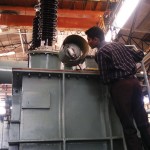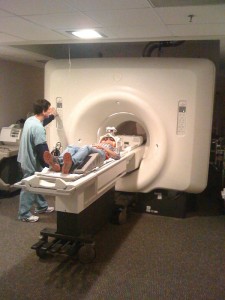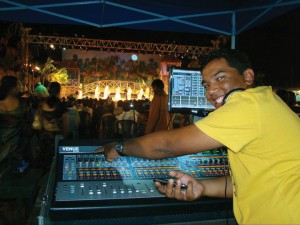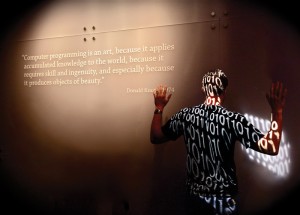The focal point of technology and development, engineering has been in the forefront of civilization for centuries. With advancements in every field and growth at every level, the scope of engineering is constantly growing. We find the coolest jobs within the most exciting branches of engineering today.
Heralded for being the driving force of a country’s development, engineers are reputed for finding solutions to difficult problems, coming up with ideas that other people generally wouldn’t even think of and creating unique products that help immensely in technological advancements of day-to-day life. It is probably for this reason that the Indian government decided to establish the Indian Institutes of Technology (IITs) in the initial phase of our country’s independence to develop a large group of individuals who could spearhead the country into the new age.
Engineering is one of the most widely opted for undergraduate degrees in the country. Considering the reputation that comes with being a graduate of engineering, particularly if someone has graduated from one of the IITs, it is no surprise that the number of applicants for engineering courses is always on the rise with each passing year. The latest records for the Joint Engineering Entrance (JEE), the highest recognised entrance examination for premiere engineering colleges, states that over 14 lakh students registered to attempt the first round of the examination called the JEE (Main) in the hope of securing a seat in an IIT, NIT (National Institute of Technology), IIIT (Indian Institute of Information Technology), and other reputed institutes.
UNDERGRADUATE COURSES
In order to attain the tag of being an engineer, a student in India can complete one of two undergraduate programmes. The two programmes offered in our country are the Bachelor of Engineering (BE) degree and the Bachelor of Technology (BTech) degree. Both courses have similar streams and specialisations and are modelled to serve the same goal: to educate a student and provide him/her with the qualification of being an engineer with the technical knowledge required to excel in the field of engineering.
For the year 2013, 14 lakh students registered to appear in the JEE (Mai n) entrance exam for engineering colleges
POSTGRADUATE COURSES
For those students who have graduated in engineering and are looking to pursue further studies, the Master in Technology (MTech) programme is a widely recognised postgraduate course in the country.
ATTAINING A DOCTORATE
For those looking to achieve a doctorate after completing the initial stages of engineering, a few institutes offer a PhD programme in engineering. These programmes differ with the institute. Research programmes, integrated research programmes, correspondence, etc are all offered in India. Students may also do an MPhil before embarking on a PhD.
 The most opted for
The most opted for
ENGINEERING DISCIPLINES IN INDIA
CHEMICAL ENGINEERING
Chemical engineering is mostly focused on working with chemicals that are utilised for a variety of requirements, most notably in industrial use. Courses cover subjects like chemical reactions, mechanical operations, principles of fuel cells, renewable energy sources, etc.
Careers
Although the most popular line of work in this field is under biochemical engineering in research organisations, laboratories, atomic power plants, paint manufacturers, fertiliser and explosive industries, there is an increasing interest and scope in nanotechnology and environmental engineering.
ELECTRICAL ENGINEERING
Electrical engineering deals with development, production and testing of heavy duty electrical machines, particularly those that are a key part of industrial functions. The subjects studied include analogue circuits, power electronics, electrical machines, systems design, nanoelectronics, etc.
Careers
There are always openings in both public as well as private sector companies for positions that assist with the development of electrical machines.
 COMPUTER SCIENCE, SOFTWARE ENGINEERING, INFORMATION TECHNOLOGY
COMPUTER SCIENCE, SOFTWARE ENGINEERING, INFORMATION TECHNOLOGY
While the field dealt with is computers, each course has a different framework dealing with either the hardware or software aspect. Depending on the institute and their course structure, the subjects covered in the courses overlap but they usually consist of studies in operating systems, artificial intelligence, software engineering, digital hardware designs, etc.
Careers
An engineer in computer science, software engineering or information technology can work as a hardware engineer, software developer, systems designer, data developer, computer programmer, database administrator, etc.
BIOTECHNOLOGY
Biotechnology deals with multiple fields ranging from pharmaceuticals and medicines to agriculture and animal husbandry. The course usually consists of subjects like biochemistry, biology, botany, chemistry, pharmacy, etc.
Careers
Having accomplished a degree in biotechnology, one can work in various industries involving research and experimental work for the industries of food and beverages, pharmaceuticals, medicines, agriculture, nutrition, etc.
 MECHANICAL ENGINEERING
MECHANICAL ENGINEERING
Concerned with development and upkeep of machines used in various industries, the mechanical engineering course touches upon the subjects of machine design, fire dynamics, robotics, fuel and combustion, microfluidics, etc.
Careers
Mechanical engineers can work in research and development, design, production, analysis and testing, installation and maintenance for companies in the industries of automobile manufacture, steel plants, air conditioning, refrigeration, aviation, shipping and more.
ELECTRONICS AND COMMUNICATION
Engineering in electronics and communications is mostly focused on working with low voltage systems like consumer electronics, computers, medical equipment as well as communication technology. Subjects covered in the course structure include electromagnetic engineering, digital communication, radio frequency and microwave engineering.
Careers
An electronics and communication engineer can find work easily in communications, media and entertainment industries. There is scope to work in both public and private sector companies involved in telecommunication, television, railways and in software engineering for information technology companies.
 CIVIL ENGINEERING
CIVIL ENGINEERING
The field of civil engineering largely deals with the various aspects of the construction industry. Some of the subjects covered under this field are fluid mechanics, soil mechanics, design of structures and structural mechanics.
Careers
While most civil engineers work in the business of construction to assist with project planning, costing and budgeting, quality assurance etc, there is also potential in coastal engineering, transport engineering and environment engineering.
The thrill of satisfying your need for SPEED
Roaring engines, the sweet smell of grease and fuel, and the sight of your engineering masterpiece smash lap records. Ah, to be a race car engineer
 OVERVIEW
OVERVIEW
A race engineer is effectively the racing driver’s right hand man, the person he relies on to set up the car and give him the information he needs to perform at his best. A race engineer spends most on the road, travelling to races and tests in the search of that vital fraction of a second which will make the car faster. All that hard work can come down to a split-second decision, which is where a race engineer really shows his skill. The race engineer has a very involved role at races as he decides how the car is run, what the setup is, how much fuel is put, what tyres are put on and what tests are carried out.
STUDY ROUTE
• Class 12 science (with physics, maths, chemistry; computer science optional)
• BE/BTech Automobile Engineering/Electrical Engineering/Mechanical Engineering
• ME/MTech Automobile Engineering
CAREERS
Automobile racing is just picking up in India so while there’s scope in the country, there aren’t too many opportunities. However, abroad there are lots of companies and racing teams looking for qualified engineers. By qualified we mean experienced, so start out building your little go-kart out of that Rx-135 engine right now!
RECENT DEVELOPMENTS
The latest in automotive engineering is the use of alternative fuels for engines and the use of lightweight materials like aluminium and carbon fibre in engine construction.
Course canvas
• The IITs (Delhi, Roorkee, Kanpur, Kharapur)
• Manipal Institute of Technology, Manipal
• University of Hamburg, Germany
• University of Michigan, USA
• Kettering University, USA
 The engineer who makes a race car go VRROOOOM!
The engineer who makes a race car go VRROOOOM!
Sirish Vissa, Race Engineer for Vol kswagen Polo R Cup and Director of Racetech, tells us what he does to keep cars running faster than 250 km/hr
How I became a race engineer
I started by volunteering with race teams. I went to college to study mechanical engineering and also participated in competitions like the Formula SAE (Mini Baja) and the Solar Challenge. Then I started working as a Data Acquisition Engineer, assisting Race Engineers with analysing data and also as a Design Engineer. As the team grew more confident in my abilities, they gave me the opportunity to engineer the car at several tests which eventually led me to become a Race Engineer working on cars for the Le Mans 24 hour race.
Responsibilities at work
I’m currently involved in building cars for various racing projects and also as a Race Engineer overseeing the technical aspects of the Volkswagen Polo R Cup.
3 things I love about my job
The best thing about my job is that it is also my hobby; I love cars and everything about them. The second best thing is that I get instant gratification. On the race track you have literally seconds to make a decision and you get immediate feedback about the effectiveness of your solution. There are never two situations exactly alike and I am continuously challenged.
Scope in India
Racing is still in its infancy but with manufacturers like Volkswagen coming into motor sport, the standard is being raised for everyone. It is a profession that will grow in the future.
The money
It depends on the experience of the engineer and the level of the sport that he is involved with. The pinnacle in terms of salary are the top engineers in F1 earning millions of dollars a year. In India, you would be looking at a starting salary of approximately Rs. 20-30 thousand a month.
A typical day at work
I start with running checks on the cars with the technical team. We then decide what tyres to fit on the cars for the session based on the weather and offer our insight to the drivers over what setup to choose for the car. During on-track sessions I work in the pit lane to analyse and solve technical issues. After the session, we go through the data from the cars and make suggestions to the drivers to help improve their lap times. We then go through the cars to check for technical issues and repeat the process for the next sessions. After the track sessions, we run checks to make sure the cars are ready for the next day.
Perks and challenges
The perks are that I get to travel all over the world and meet lots of fantastic people. In terms of challenges, everything in motorsport needed to have been done ‘yesterday’. Our deadlines are extremely tight and stress levels are quite high.
Requisite skills
Communication is a key part of the job because you are always receiving information from the driver and conveying your thoughts to the technicians and the mechanics. Problem solving is another key trait. Finally, it is being able to understand and pick out the one piece of relevant information you need from the ten useless bits you receive.
Advice for budding race car engineers
Be prepared to work harder and longer hours than you have ever imagined you would need to.
 The thrill of designing new TECHNOLOGIES
The thrill of designing new TECHNOLOGIES
For those who are dreamers, forever redesigning gadgets and devices in their heads, and wishing those reinventions would see the light of day, design engineering is the way to go
Design engineering is an advanced and specialised branch of engineering that marries the principles and aesthetics of design with the know-how and skills of engineering. Electronic gadgets, factory machines, equipment, etc are born from the work of design engineers who apply their artistic vision to the electronic and mechanical make-up of the structure or machine. Design engineers use computer-aided design (CAD) software like SolidWorks, Pro Engineer and DraftSight, and scripting languages like PLaSM to create and test their models, after which they build prototypes.
STUDY ROUTE
• Class 12 science (with maths,physics, chemistry, computer science)
• BE/BTech Electrical/Electronic/Civil/Mechanical Engineering (depends on the kind of products you wish to design and develop)
• ME/MTech Electrical/Electronic/Civil/Mechanical Engineering OR a postgraduate course in product design or industrial design
• Alternatively, do a diploma in any of the above engineering disciplines after class 10 and join a BE or BTech course in its second year directly.
CAREERS
Design engineers have the advantage of being employable virtually anywhere. Almost every industry that builds and manufactures is in need of design engineers. The most lucrative sectors are consumer electronics companies that make TVs, refrigerators, computers, etc; electronics system companies that are involved in system design; semiconductor companies that manufacture semiconductors which find use in a number of electronic devices; and telecom companies that make telephones, smartphones, mobile dongles, etc.
RECENT DEVELOPMENTS
India is a burgeoning chip designing destination. With the increase in computer usage and higher demand for cheaper PCs, chip designers are constantly working on creating efficient computers at lower cost. While the designs are made in India, fabrication and manufacturing are rarely done so. The same can be said for smartphones. However, smartphone usage has skyrocketed in India in the last couple of years, which has given birth to Indian smartphone manufacturers like Micromax and Karbonn. More than products, components are being designed in India – so semiconductors and integrated circuits (chips) are currently the domain of design engineers.
Course canvas
• IIT Bombay (also home to the Industrial Design Centre)
• Jadavpur University, Kolkata
• Anna University, Chennai
• MIT Institute of Design, Pune
• University of Strathclyde, UK
• Chalmers Institute of Technology, Sweden
• University of Waterloo, Canada
 The engineer who designs CHIPS
The engineer who designs CHIPS
Vishal Diwan shares the joys of being a chip designer and being on the forefront of the digital revolution of the 21st century
How I became a chip designer
I pursued an MTech from IIT Bombay, specialising in electronic systems, before starting work as a digital design engineer.
Three things I love about my job
The coolest thing about this job is that I deal with cutting edge technology. It was always my fantasy to learn how cool electronic gadgets work. The innovation and creativity I put in to make the world a safer and better place is the best part about my job.
Scope in India
Once you are specialised in the field and profile you want to focus on, a lot of high profile jobs are waiting for you. You can actually see your designs in the market. VLSI [very-largescale integration, the combining of thousands of transistors into a single chip] is one of most promising fields in design
engineering.
The money
Compensation for a design engineer is way better than that for those in other engineering profiles.
A typical day at work
I am going through training right now, but I can tell you that the office is currently full of all the new technology and stuff they use in the industry.
Requisite skills
You need to be a smart worker more than a hard worker. You should also be familiar with and know the latest design tools [CAD software] available in the market.
Advice for budding chip designers
This is one of the most challenging branches of engineering. If you have the desire and passion to do something and see it come alive, this is the best branch for you.
VLSI AND DESIGN ENGINEERING
WHAT VLSI IS
Very-large-scale integration is the process that is responsible for several electronic devices – sensors, microphones, computers and amplifiers to name a few – we have today. Integrated circuits (‘chips’) are created by combining thousands of transistors. These chips find multiple uses.
WHAT IT INVOLVES
Transistors, which are the building blocks of modern electronic devices. They are capable of amplifying and switching electronic power and electronic signals.
WHAT IT PRODUCES
A small chip that functions as the ‘brain’ of the device. In a computer, this is a microprocessor, only a few centimetres long and wide, that is capable of doing all the functions of the computer’s brain – the CPU (central processing unit).
WHY IT NEEDS DESIGN ENGINEERS
Design engineers, owing to their engineering background, understand how VLSI works.
• First they determine what functions the chip needs to carry out.
• Then they draw up the components by breaking down the functions of the chip.
• Next, they create a ‘floor plan’ to indicate where the components will be placed on the chip and how they will be interconnected. Design engineers try to keep the area of the chip as small as possible but sufficient to fit all components.
• Once the design is final, they send it to manufacturers for it to be fabricated into a chip.
 The thrill of controlling a ROBOT
The thrill of controlling a ROBOT
They have been trained by Hugh Jackman in Real Steel, seduced by Megan Fox in Transformers and entrusted with the job of cleaning the planet in Wal l- E. While the depiction of robots in movies might seem far-fetched, in reality, robotics engineers have developed some truly fascinating inventions
The Japanese commander of the International Space Station is expecting a companion to join him in space. This companion is a tiny, talking Japanese robot called Kirobo, which was launched into space last month. Today, almost every industry relies on robotics to improve the efficiency of its functioning, giving this field great potential for growth. Robotics brings together allied fields such as mechanical, electrical and computer engineering. The main responsibility of robotics engineers is to develop, design and maintain robots to ensure they perform particular functions.
STUDY ROUTE
• Class 12 science (with physics, chemistry, maths)
• BTech Mechanical Engineering/Electronics/Mechatronics/Computer Science (currently there is no bachelor’s degree in robotics in India). Also, The Centre of Artificial Intelligence and Robotics (CAIR) was formed by the DRDO (Defence and Research Development Organisation).
• MTech in Robotics
CAREERS
The career options within robotics are varied as it is employed in various industries such as manufacturing, mining, agriculture, automobiles, healthcare, military, etc. Therefore, work opportunities within the field of robotics are limitless with the added opportunity of combining interests (such as medicine and robotics to work on medical robots). Kuka Robotics and Precision Automation Robotics India are popular names in the Indian robotics industry.
RECENT DEVELOPMENTS
According to the president of the Association of Advancing Automation, we can expect robotics to create 1.5 million jobs by 2015, with the main source of employment being the manufacturing of service robots. To encourage the growth of robotics in India, The Indian Robot Olympiad competition is held annually for students between the ages of 9 and 19.
 The engineer with an army of ROBOTS
The engineer with an army of ROBOTS
Aakash Sinha is CEO of Omnipresent Robot Technologies Pvt. Ltd and visiting faculty at Delhi Technological University
How I became a robotics engineer
I studied electrical engineering at Delhi Technological University. Then, I did my master’s degree in robotics at Carnegie Mellon University. Eventually, I started my own company and we are currently working with DRDO, ISRO as well as police and defence forces.
Responsibilities at work
A typical robotics engineer has to decide which area he wants to specialise in. There are three aspects to robotics: sensing, thinking or action. Based on what one specialises it, he/she will be doing different things. For example, someone working on action will be designing a robotic arm and testing it, while someone working on thinking will be writing software to simulate artificial intelligence.
3 things I love about my job
One of the best things is that you work on a robot, you programme it and you see it moving, almost like a living thing. People who work in this field, they lose track of time, they work day and night, and still keep enjoying that. The third thing is that robotics as a technology has so much scope to change our lives by solving unsolvable problems. For example, very acute surgeries which are extremely difficult to perform can be done by robots, now or in the future. Almost every aspect of life can be changed with robots and that’s exciting.
Scope in India
The next technology that everyone is going to use is robots. They will be doing chores at home, fighting wars, assisting the elderly, performing surgeries. Robotics in India is still growing, but there is definitely scope in defence robotics. As far are personal [consumer] robots are concerned, we have seen robotic vacuum cleaners. In India; they haven’t been hugely successful but it is coming up. Also, medical robotics is catching up; we have seen robot assisted surgeries and in the next five years or so we will see a lot more of these activities. Also, there is a lot of scope in robotics for an entrepreneur because the industry is new and it needs to be grown.
The money
It is difficult to find skilled robotics engineers in India. The problem is there are not many colleges offering good courses in robotics. However, someone who is hired after an undergraduate degree in robotics will earn about 10-25% more than a software engineer because it is a specialised field.
A typical day at work
Because I am also an entrepreneur, apart from the technical piece I have to ensure that people in my organisation are motivated and we are following our goals. I also have to catch up with investors, finances and clients. So 50% [of my time] goes in handling the business side and the other 50% I focus on the technical side.
Perks and challenges
Because it is a growing industry, there is a lot of scope of inventing something that will revolutionise the industry. The biggest drawback is, even though the field is exciting, sometimes it can be frustrating because you will try to teach your robot something new but it will keep failing. It is certainly difficult to build intelligence into a machine, but you still have to persevere and try something new.
Requisite skills
People working on the action part, it would be good if they know designing software such as CAD and AUTO CAD, people who are working on a thinking piece, they should have knowledge of a good programming software such as C++, and those working on the sensing part, it would help if they have a knowledge of image processing, computer vision. But more than skills, if you are able to stay up all night because you love the field so much, that is important.
Advice for budding robotics engineers
If you do enjoy robotics, it is a very good time to enter this field. In the next 4-5 years when the industry grows, you will be one of the first few pioneers. So it’s definitely an exciting field, but make sure this is really what you want to do in life.
 The thrill of building a SPACESHIP
The thrill of building a SPACESHIP
Have you dreamt about working for NASA since the time you built your first paper aeroplane? Before you board a flight, do you take a moment to stare at its big, beautiful turbine engines? Is Superman your favourite superhero? If the answer to any of these questions is yes, it’s time to consider a career in aerospace engineering
From kites and hydrogen balloons to modern day spacecrafts, the human race has displayed tremendous innovation in its obsession with flight. Aerospace engineers design, test, operate and modify machines that fly (this includes aircraft, space shuttles, hovercrafts, satellites, etc). There are two main sub-divisions within aerospace engineering: aeronautical engineering and astronautical engineering.
STUDY ROUTE
• Class 12 (with physics, chemistry, maths, computer science)
• BE/BTech Aeronautical Engineering
• ME/MTech Aeronautical Engineering
• Alternatively, you can take the exams conducted by The Aeronautical Society of India (AeSI) or the AMIE (Associate Member of the Institution of Engineers).
CAREERS
Aerospace engineers are employed with commercial airlines, military and defence departments, etc. Popular employers in India include Hindustan Aeronautics Limited (HAL) and Indian Space Research Organisation (ISRO). A number of Indian engineers are also employed by NASA.
RECENT DEVELOPMENTS
Currently, India is the ninth largest aviation market in the world. Business reports indicate that India will purchase 1,200 to 1,400 new aircrafts over the next few years.
Course canvas
• The IITs (Madras, Mumbai, Kanpur, Kharapur)
• Indian Institute of Science, Bangalore
• Punjab Engineering College, Chandigarh
• Indian Institute of Aeronautical Engineering (IIAE), Dehradun
• The Delft University of Technology, Netherlands
• Massachusetts Institute of Technology, USA
 The engineer who became a ‘ROCKET SCIENTIST’
The engineer who became a ‘ROCKET SCIENTIST’
Pratik Thaker is an aerospace engineer and entrepreneur who is currently the project manager at Team Indus, the only team from India competing in the Google Lunar X Prize
How I became an aerospace engineer
I was always extremely interested in physics and science as a child, and my dad, being an engineer, was a major inspiration. It is due to this that I pursued a bachelor’s degree in aerospace engineering at the Georgia Institute of Technology in the US, where I specialised in spaceflight.
Responsibilities at work
I am currently the project manager at Team Indus, the only one from India competing in the Google Lunar X Prize (a global competition to find the first venture that can privately launch and land a rover on the Moon before 2015). My current job responsibilities involve a gamut of things – managing the technical aspects of the project (from the trajectory to the spacecraft and the rover), interfacing with experts and investors, and cheering my team on in tough times!
3 things I love about my job
One, we’re trying to go to the Moon, and create history. Waking up to the feeling of that every day is indescribable. ‘Nuff said! Two, we have had the opportunity to meet ISRO heads, technocrats, and some of the most distinguished scientists.
Three, our team has some of the best young people we could find – IITians, international scholars, and guys who have sent satellites up into space – all in their early twenties!
Scope in India
Aerospace engineering is still a fledgling field in India, but it is growing fast. Our national aerospace labs are working on a wide array of military and commercial technologies. Our space agency is pushing to Mars and beyond, and is already carrying out the first preparations for indigenous manned spaceflight. I believe that the future of aerospace in India is very bright.
A typical day at work
One day you are struggling to find a propulsion system that fits all your requirements, the other you are trying to create a simulation to see how your craft will reach the Moon. The only things constant are the enthusiasm, equations on the whiteboard, and hot masala chai!
Perks and challenges
The biggest perk has to be the pride of being referred to colloquially as a ‘rocket scientist’! But seriously, to have the knowledge and the ability to make massive vehicles weighing tonnes fly, go into space and land on other planets is immensely gratifying. There is a bit of a struggle to find the right job or the right kind of capital to start something entrepreneurial. But this is changing for the better.
Requisite skills
You have to be proficient in physics and maths and have basic proficiency in computing – aerospace vehicles are almost exclusively controlled by flight computers. Aerospace engineering brings together engineering fields like mechanical, electrical, computer, thermal, etc. The ability to understand each of these pieces and how they interact is the hallmark of an effective aerospace engineer. The final skill is a basic understanding of economics and risk as you want to be able to design something that is cost effective, and will still not fail.
Advice for budding aerospace engineers
If thoughts of reaching the stars keep you up at night, if you get butterflies in your stomach watching the same clip of a rocket launch on YouTube over and over again, then this is the field for you! So follow your heart and pursue it! There is nothing more gratifying in the world (or the Moon!).
 The Thrill of aiding the Human Body
The Thrill of aiding the Human Body
Bionics, prosthetics, implants, body scanners and other medical equipment – if developing these and improving people’s health appeal to you, consider a career in biomedical engineering
Biomedical engineering combines principles of engineering, technology and design with biology and medicine to create products for healthcare. These products aid in diagnosing, monitoring and treating of illnesses and health conditions. MRI (magnetic resonance imaging) machines, pacemakers, dental implants, etc are all developed by biomedical engineers.
STUDY ROUTE
• Class 12 science (with physics, chemistry, biology and maths)
• BE/BTech Biomedical Engineering
• ME/MTech Biomedical Engineering
• Students may also opt to do a postgraduate diploma in biomedical science or basic clinical research after their bachelor’s degree.
CAREERS
Biomedical engineers may find employment in pharma companies, medical technology firms, labs and hospitals. India has a large market for prosthetics and drugs. Those wishing to remain in academia may choose to be professors and lecturers in colleges and universities. That said, India is not yet a hotbed for research and development in this field.
RECENT DEVELOPMENTS
Researchers are investigating the scope and viability of creating bioartificial organs (artificial organs made from biological materials like living tissues) for transplants. Diagnosis of illnesses using computers entirely is also a new development. Skins lesions, breast cancer, heart conditions, etc can now be identified and diagnosed digitally, and there are constant improvements in this area to improve efficiency and accuracy.
Course canvas
• All India Institute of Medical Sciences (AIIMS), New Delhi
• The IITs (Bombay, Kharagpur)
• Banaras Hindu University, Institute of Technology, Varanasi
• Anna University, Chennai
• John Hopkins University, USA
• University of Glasgow, UK
Meet Ajay Seth who works with orthopaedic implants that help stabilise and strengthen the skeletal framework of the human body
How I became a biomedical engineer
My inclination towards the science of human body began during junior college. I was fascinated by the things we could achieve by combining engineering and biology. I completed my biomedical engineering in the year 2005. To further understand my abilities, I did my master’s degree in biomedical engineering (with a specialisation in orthopaedic biomechanics) in the USA.
3 things I love about my job
Working in the medical device industry makes you feel that you are working for a cause. You are fixing the lives of people who are distressed. I may not be a surgeon but I definitely make the life of a surgeon more comfortable because I give him the service and products which he can depend on.
The medical device industry is never stagnant. There are innovations every day. It is growing at a very rapid pace and we have the advantage of being at the forefront of these innovations.
The industry is recession free and due to medical tourism boom in India there are a lot of opportunities.
Scope in India
Due to the population of India as well as growing medical tourism, there is ample opportunity in sales and marketing. However, due to limited resources and funding, there is little scope for innovations, new develoments or research. There is a huge demand among medical practitioners for entrepreneurs who can solve their current problem at a fraction of the cost of western manufacturers. However, this would take a huge investment and there is currently no government funding for medical device manufacturing. There is ample scope for research if one would like to pursue it but one will have to chart his/her own course.
The money
For an entrepreneur, it will depend on how much calculated risk he is willing to take in exploring the opportunities in India. Same goes for an executive. It is not unheard of to get a package of about Rs. 12 lakhs per annum with just a couple years’ experience.
A typical day at work
A typical day would start with phone calls from orthopaedic surgeons who will let us know their operating schedule for the next day and their requirements. I go to the operation theatre sometimes to assist a surgeon if one of my technicians is busy. Typically the entire day is spent making sure the material is dispatched to hospitals correctly because anything wrong will affect the surgery outcome. Evenings are utilised for customer meetings – meeting orthopaedic surgeons for demonstrations and introducing products.
Perks
You know more about the human body than any other engineer and you can converse with medical practitioners better because you know the technical benefits of your products as well as how they help surgeons.
Requisite skills
There must be an inherent passion to learn biomedical engineering and one must be able to visualise a career which isn’t just like any other engineering career. He must know that he might not end up walking a chosen career path but he may require to carve his own path and emerge.
Advice for budding biomedical engineers
Seriously focus on one aspect of biomedical engineering. I chose orthopaedics because during a field trip to All India Institute of Rehabilitation, Mumbai I noticed that in India we still use primitive castings for poor people with fractures. Hence, I wanted to know more about these products and my research got me to where I am now. Dealing with world renowned brands in orthopaedic implants, I am now able to set my goals and envision my future in this business.
 The Thrill of Generating the PERFECT SOUND
The Thrill of Generating the PERFECT SOUND
You get to be at the biggest concerts, you make the most popular musicians sound good, and set up the sound for blockbuster movies. Yes, that’s the life of a sound engineer
You have to be fascinated with sounds and music to be in this career. Audio engineering concerns the creative and practical aspects of sounds and music. An audio engineer works with recording, manipulation, mixing and reproduction of sounds. An audio engineer ensures that the sound that results from a TV show or a studio recording is of the highest quality.
STUDY ROUTE
While you don’t need a specific undergraduate degree to become an audio engineer, you need to genuinely love music. You need to know basic of sound so having an understanding of mathematics and physics helps. While there are institutes and colleges that offer courses on sound engineering, there’s nothing like interning at a studio and learning on the job.
CAREERS
There are jobs available in various industries for a qualified and experienced sound engineer. A sound engineer’s career can be varied and very exciting. There are opportunities in the field of movies, television, advertising, broadcasting, live concerts, multimedia organisations, CD production, schools and so on.
RECENT DEVELOPMENTS
Technology like mixers, equipment and software keep changing and getting upgraded. You need to ensure you are aware of upgrades and adapt quickly.
Course canvas
• Indian Institute of Science, Bangalore
• School of Audio Engineering (SAE): Chennai, Bangalore, Mumbai
• Film and Television Institute of India, Pune
• National Institute of Film and Fine Arts, Kolkata
• Internatinal Maritime Institute, Uttar Pradesh
• Middle Tennessee State University, USA
• London School of Sound, UK
 Making One Republic Sound Good on STAGE!
Making One Republic Sound Good on STAGE!
Aries Fernandes, a sound engineer with Deltasound, talks through the life of a sound engineer
How I became a sound engineer
My dad had a small sound rental company and I used to assist him as a cable boy during summer vacations. During my college days I started working with Goa’s ace studio engineer Aurvile Rodrigues to learn the basics and finally moved to live sound engineering. Presently I am working as an audio engineer for Delta Sound, Qatar.
Responsibilities at work
A sound engineer’s responsibilities differ with different divisions of audio engineering. A systems engineer’s job is to make sure the right system is rigged for the specific venue and is tuned to compensate for room/ venue anomalies. A front-of-house engineer’s job is to make sure the band sounds well balanced to the audience, keeping in mind the genre of music he is mixing. A monitor engineer’s job is to make sure the band on stage is comfortable with their personal monitors, and can hear every other band member clearly. This is all with respect to audio in concert situations. In studios too engineers have designated jobs, like a recording engineer in a studio is responsible for capturing the cleanest recording of the artist, so as to make it easy for the mixing engineer to balance all the tracks.
3 things I love about my job
Travel; I get to meet lots of people; I get to work with bands/musicians which most people worship.
Scope in India
India is a huge market and it’s booming. There are quite a few companies that are amazing, like Sound and Light Professionals, Sound. com, Electrocraft and Reynolds, which are on par with most companies globally; being associated with them as an audio engineer helps. Top engineers are mostly directly associated with the band/artist as their personal engineer, touring with them. The biggest employer is the film/studio/ TV industry. With growing number of films and TV channels, the demand for audio engineers is climbing.
Growth opportunities
Cable boy->assistant->audio tech ->audio engineer->systems ngineer/ mix engineer->production manager/project engineer/band engineer
The money
All I can say is it pays well. There are no broke audio engineers in comparison to stock brokers, real estate dealers, etc.
A typical day at work
I don’t work. I just show up.
Challenges
The challenge of a live audio systems engineer is making sure the audio system performs to its optimum capacity, while the mixing engineer has to make sure the band sounds well balanced to the audience. He has just one go at it, there is no second chance. He has to make sure it sounds acceptable to the 10,000+ critics that are standing as audience.
Requisite skills
Audio engineering is a combination or art and science. It’s helpful to have some musical background and a knowledge of electronics. Today, everything is moving from traditional copper wire interconnects to CAT5, fibre optics, etc. Hence, knowledge of computer networking helps a lot.
Advice for budding sound engineers
It’s not as glamorous as it seems. In live concerts, you are one of the first few in and the last one out of the venue. Work with local sound studios during vacations or part-time. Above all, start listening to really good music which will help you understand good sound.
 The Thrill of Manipulating COMPUTERS
The Thrill of Manipulating COMPUTERS
The computer has come a long way from its first avatar as a simple counting machine. Today, computers rule many aspects of our lives, but they still have a long way to go. Contribute to the digital revolution of our times with a degree in computer engineering, writes Ansh Patel
Computer engineering is a field of study focused on learning and applying various aspects of the computer, including its physical components and the logic that makes it. Computer engineers work on a variety of devices that range from the massive (a supercomputer) to the petite (a smartphone). They work on a number of issues – safeguarding attacks from hackers, designing apps and websites, as well as creating artificial intelligence, etc.
STUDY ROUTE
• Class 12 science (with physics, chemistry, maths and computer science)
• BE/BTech Computer Engineering
• ME/MTech Computer Engineering
• Alternatively, you can do a diploma in computer engineering after class 10 and then join a BE or BTech course in its second year directly.
CAREERS
This field has greatly burgeoned in recent years opening up a wide array of professions:
• Game and app developers
• Database managers who provide storage, privacy and 24×7 operational services for large corporations
• Web designers
• System security experts who create software to protect your system from attacks from virus, malicious software and hackers
• Network analysts who are responsible for establishing and maintaining a communication system within a big company to ensure data can be exchanged freely and safely between different teams
• Artificial intelligence (AI) and robotics designer
• Hardware and systems programmers who are responsible for creating the interface of how physical components of the computer will interact with its software logic
• Ethical hacker
RECENT DEVELOPMENTS
• E-commerce boom – online shopping sites are quickly becoming a viable alternative for many and this requires both an easy-to-use web interface (which needs smart designers) and privacy and security during transactions (which needs good security experts).
• Cheap micro-sized hardware – this opens up a massive opportunity for smaller companies to experiment with hardware and make innovative devices like the Arduino-powered Raspberry Pi – the world’s first $35 computer.
• An open market for all – with Android and Apple as the software hotspots for mobile innovation and creativity, young developers in India are jumping into the fray by grabbing SDKs (software development kits) that enable them to develop their idea of the ‘next big app’.
Course canvas
• The IITs (Bombay, Delhi, Kanpur, Kharagpur, Roorkee, Madras)
• BITS Pilani
• The NITs (Nagpur, Surat, Trichy, Durgapur, Kurukshetra)
• Massachusetts Institute of Technology, USA
• North Carolina State University, USA
• City University of New York, USA
Rajeshwawr Nagle, the developer behind such apps like it’s Emergency which can call and text your chosen contacts during an emergency, and HealthStylus which maintains your health records, talks to Youth Inc about his profession
How I became an app developer
I have more than 12+ years of experience in the field of software development. I was delighted when I first heard of Android and iPhone technology and its capabilities. I immediately started looking for tutorials and other downloadables and that’s how I started with Android and iPhone [app] development.
Responsibilities at work
• Put user experience as the top priority
• Meet with clients
• Make strategic plans and execute them
• Collaborate with team to develop products from conception to implementation and deliver projects on time
• Maintain an excellent understanding of the market
3 things I love about my job
• I love the health care domain and got to work within it
• I can implement my own ideas
• I can be a part of this technological revolution
Scope in India
The use of mobile phones has increased tremendously in recent years. Due to that, the demand of quality apps has increased. That alone creates a huge scope for mobile app developers.
The money
A freshly graduated student earns somewhere within Rs. 4-10 lakhs depending on their skills and the college they have graduated from.
A typical day at work
I start my day at the office with a 20-minute briefing with my team members, after which I attend my scheduled online and offline meetings. I check the progress with my team members during the afternoon and we end our day by discussing the suggestions and queries of the prospective clients I met, and chart out our plan of action.
Perks and challenges
Being in the fastest growing industry, I am associated with the revolutionary future technology. The biggest challenge is to make the original code of the app run seamlessly on all mobile phones of different manufacturers.
Requisite skills
Decent knowledge in programming and a healthy marketing budget to get noticed in today’s crowded app market.
Advice for budding app developers
Jump right in. Start with Android which is open source. You can add many things of your own and customise the OS [operating system] as per your requirement, which means you can showcase your mobile device with the features you want.
CLOUD COMPUTING
WHAT IT IS
Cloud computing is a commonly used jargon for ‘distributed computing’ having several computers connected in a network without physical cables (usually via the Internet) and being able to run a programme or process on all those computers at the same time.
WHY IT’S HOT
It has gained popularity as cloud storage which enables you to store your data on remote servers. Google Drive and Dropbox are the most popular options.
CAREERS
Google, IBM, Cisco are some of the major players in this field and are always on lthe ookout for young visionaries. Typically, they look for people who understand cloud architecture and have the necessary IT skills to build and implement cloud systems. These companies also run cloud certification programmes for aspiring cloud programmers.
 The Thrill of Playing with CHEMICALS
The Thrill of Playing with CHEMICALS
Does the thought of being around flasks bubbling with colourful chemicals excite you? Did you secretly always want to be Professor Snape, concocting useful products? Then chemical engineering is your calling
To put it simply, a chemical engineer is one who converts raw materials and chemicals into practical and useful products. There are two aspects to this: designing, building and running a plant or machinery that process chemicals (this is chemical process engineering); or developing new products in food, cosmetics, drinks and even textiles and weapons (this is chemical product engineering).
STUDY ROUTE
• Class 12 science (with chemistry, physics, maths; biology optional)
• BE/BTech Chemical Engineering
• ME/MTech Chemical Engineering
• Alternatively, do a diploma in chemical engineering after class 10 and then join a BE or BTech course in its second year directly.
CAREERS
Popular employers for chemical engineers are the oil, natural gas and petrochemical industry; paper manufacturing mills; plastics and polymer plants; textile factories; pharmaceutical companies; waste treatment plants; cosmetics companies; perfumeries; fertiliser companies; food processing plants; and paint and dye companies, apart from factories that produce chemicals. India’s DRDO (Defence Research and Development Organisation) also employs chemical engineers.
RECENT DEVELOPMENTS
Chemical engineering is no more a discipline that is studied or practised in isolation. When coupled with computer science or biotechnology, the possibilities are endless. The recent Human Genome Project, which maps and replicates human genes, owes much to chemical engineering and its principles for replicating long chains of DNA. In India, the BARC is engaged in, among other things, Cryogenics research and developing a helium refrigerator and a helium liquefier. With the advent of the Reliance group, the chemical industry was given a boost. The world’s largest p-xylene plant that manufactures polyesters, and the world’s largest petroleum refining company, are owned by Reliance and located at Jamnagar.
Course canvas
• The IITs (Bombay, Delhi, Kanpur, Kharagpur, Roorkee, Madras)
• BITS Pilani
• The Mumbai University Institute of Chemical Technology (MUICT)
• The Indian Institute of Science (IISc), Bangalore
• Hindustan Institute of Technology and Sciences, Chennai
• Massachusetts Institute of Technology (MIT), USA
• National University of Singapore
 The Engineer who Makes You Smell RAVISHING
The Engineer who Makes You Smell RAVISHING
Gaurav Mittal, Vice President of L’Soul Fragrances and Managing Director of Aromatic & Allied Chemicals, shares his passion for crafting fragrances
How I became a perfumer Passion for this industry and my family business background. My father was into farming of natural essential crops in the early 70s and when he came back from the farms, he used to smell very fresh. He would say these were natural essential oils that were taken out from grass. After my school, it was clear in my mind who a perfumer is and what background is required to get into this line. Thus I chose to become a chemical engineer. Later I did a master’s in food and flavour technology. Further, I was selected to do a master’s in perfumery in France and later an MBM (Master in Business Management) in the UK. Both these degrees added to my first
degree.
Responsibilities at work
At present I am involved in running two companies: Aromatic and Allied Chemicals (AAC) and L’Soul Fragrances (LSF). In AAC, I am involved in general management, manufacturing of natural essential oils and aroma chemicals, R&D (research and development) for development of new innovative natural products, developing new technologies for farming and working with farmers all over India for direct sourcing of natural crop oils. In LSF, I am involved in creating fragrances for national and international markets and travelling the world to know about new market trends in perfumery.
3 things I love about my job
I feel happy and passionate and it’s challenging
Scope in India
Scope is tremendous. Due to increasing disposable income and marketing strategies, now people have money and knowledge to buy perfumes. For all big international giants, India is the target for income in perfumery, and they are trying hard to enter the Indian market.
The money
Frankly, no one knows the salary of a perfumer because they do not declare it. They are the pillar of any fragrance house, so imagine the salary of the ‘right’ perfumer.
A TYPICAL DAY AT WORK
When a project comes, you are given a time target as well as the price target for making the perfume, but you are limited in the raw materials.
CHALLENGES
International regulations are always changing, so that makes life hard for a perfumer. Price driven markets and copycat products from competitors are other challenges.
REQUISITE SKILLS
Only passion for this industry and yes, of course, a chemistry background.
ADVICE FOR BUDDING PERFUMERS
A perfumer should have passion for this industry and should be ready to accept challenges in order to understand consumers.
One of the most dyanamic fields in science stem cell research gives you the chance to be a part of medical history and change biology textbooks of the future
Stem cell research has led scientists towards monumental medical breakthroughs. Cures for terminal diseases such as cancer, Parkinson’s Disease and Type 1 diabetes as well as the regeneration of tissues and organs are inching closer towards reality thanks to stem cells. There are two things that differentiate a stem cell from the other cells in your body: (1) once a stem cell is divided, it can become any one of the 220 different cells in the human body, (2) stem cells can reproduce themselves several times. There are three types of stem cells: embryonic stem cells (found within the embryo), adult stem cells (found in developed tissues) and induced pluripotent stem cells (iPS cells, adult cells that are reprogrammed to give it the properties of embryonic cells).
STUDY ROUTE
• Class 12 science (with biology)
• BE Biotechnology/BSc (with minimum one biology subject)/MBBS/BTech (in life sciences – biotechnology, microbiology, bioinformatics, biochemistry)
• MSc/MTech (in life sciences)/postgraduate programmes in stem cell research are also available
• PhD in stem cell research
CAREERS
In India, there is considerable work being carried out in the field of stem cell research, particularly at Reliance Life Sciences and the National Centre for Biological Sciences, along with many other institutes. There is also significant support from the Government of India to develop stem cell research facilities in the country. Therefore, one can find employment (in R&D, clinical research, production, etc) at one of the various stem cell research institutes as well as pharmaceutical and biotechnology companies.
RECENT DEVELOPMENTS
Earlier this year, a group of Japanese scientists were able to use stem cells to create a completely functional human liver, although, they said it could take another ten years for it to be applicable in regenerative medicine. There have been rapid developments in this field over the last decade and according to a study carried out by Transparency Market Research, the stem cell market is pegged to reach US$120 billion by 2018.
Course canvas
• Indian Institute of Technology (Delhi, Kharagpur)
• Centre for Cellular and Molecular Biology, Hyderabad
• Centre for Stem Cell Research at Christian Medical College, Vellore
• University of Wisconsin-Madison, USA
• King’s College, UK
 The Engineer who Finds Cures for the INCURABLE
The Engineer who Finds Cures for the INCURABLE
Ankur Singh is Assistant Professor of Mechanical Engineering at Cornell University and directs the Immunotherapy and Cell Engineering Lab at Cornell. His primary areas of research are immuneengineering, stem cell engineering, and microscale-nanoscale bioengineering
How I became a stem cell engineer
I have always believed that by applying our knowledge of engineering, we can solve the most difficult problems in biology and medicine. During my PhD at the University of Texas (Austin), I engineered vaccines against Lymphoma. Some of the observations in pre-clinical research against cancer made me interested in personalised medicine. To that end, stem cells are one of the best answers as these specialised cells can be obtained from the patient and transformed into other more adult or mature cells. I have been particularly interested in ‘induced pluripotent stem cells’ that can be derived in well-equipped labs by taking skin or blood samples and reverting them from an adult state to an embryonic-like stem cell state. These stem cells can then form pretty much every other cell type in the body.
Responsibilities at work
Like most other university professors (in the US), I actively engage in cutting-edge research, supervise a team of researchers, and organise and conduct lectures. The projects in my laboratory (Immunotherapy and Cell Engineering Lab at Cornell) are geared towards solving unmet medical needs and applying engineering fundamentals to come up with improved therapies against infections, cancers, and osteoarthritis.
3 things I love about my job
I enjoy the flexibility in my job which allows me to engage in professional activities outside of Cornell and conduct research driven by my own ideas. I like being surrounded by intellectuals; Cornell students are highly talented and we have a pool of world renowned faculty. If you do good work in the field of your expertise, there is strong recognition by your peers which is very rewarding.
Scope in India
Stem cell engineering is an emerging field worldwide with tremendous scope in translational medicine, screening of drugs, and many other areas. In India, continuous efforts are being made at the academic and industry levels to come up with an integrated strategy. There are institutes that offer programmes in stem cells and several new companies are getting involved in this research.
A typical day at work
My typical day at work starts with responding to the important emails and then meeting researchers and overseeing the ongoing lab work. I engage in discussions with my researchers to see their progress and troubleshoot any problems related to the work. I spend a good amount of my time writing research grants to bring in funding to the lab. I also have slots dedicated to my teaching activities and meeting with my class students.
Requisite skills
It requires fundamental understanding of stem cell biology and how engineering tools are applied in medicine. To conduct active research, one needs to be highly proficient in cell culture techniques, running biological assays and analyses, and an ability to integrate engineering with biology. Lab infrastructure that supports this level of research is also critical.
Perks and challenges
In the USA, an engineering professor gets a competitive compensation. This along with the job satisfaction, job security, retirement benefits, health benefits, and the quality of life speak for itself. However, the initial years of a tenure track faculty position are highly demanding. Like other nations, we also face the economic issues that could affect lab dynamics and research.
Advice for budding stem cell engineers
Gather fundamental knowledge about the current state of the field and obtain hands-on training in labs that are well equipped. This field is ethically sensitive and demands responsible research practices. I encourage researchers to gather experience from leading stem cell labs worldwide.
Volume 3 Issue 3





























